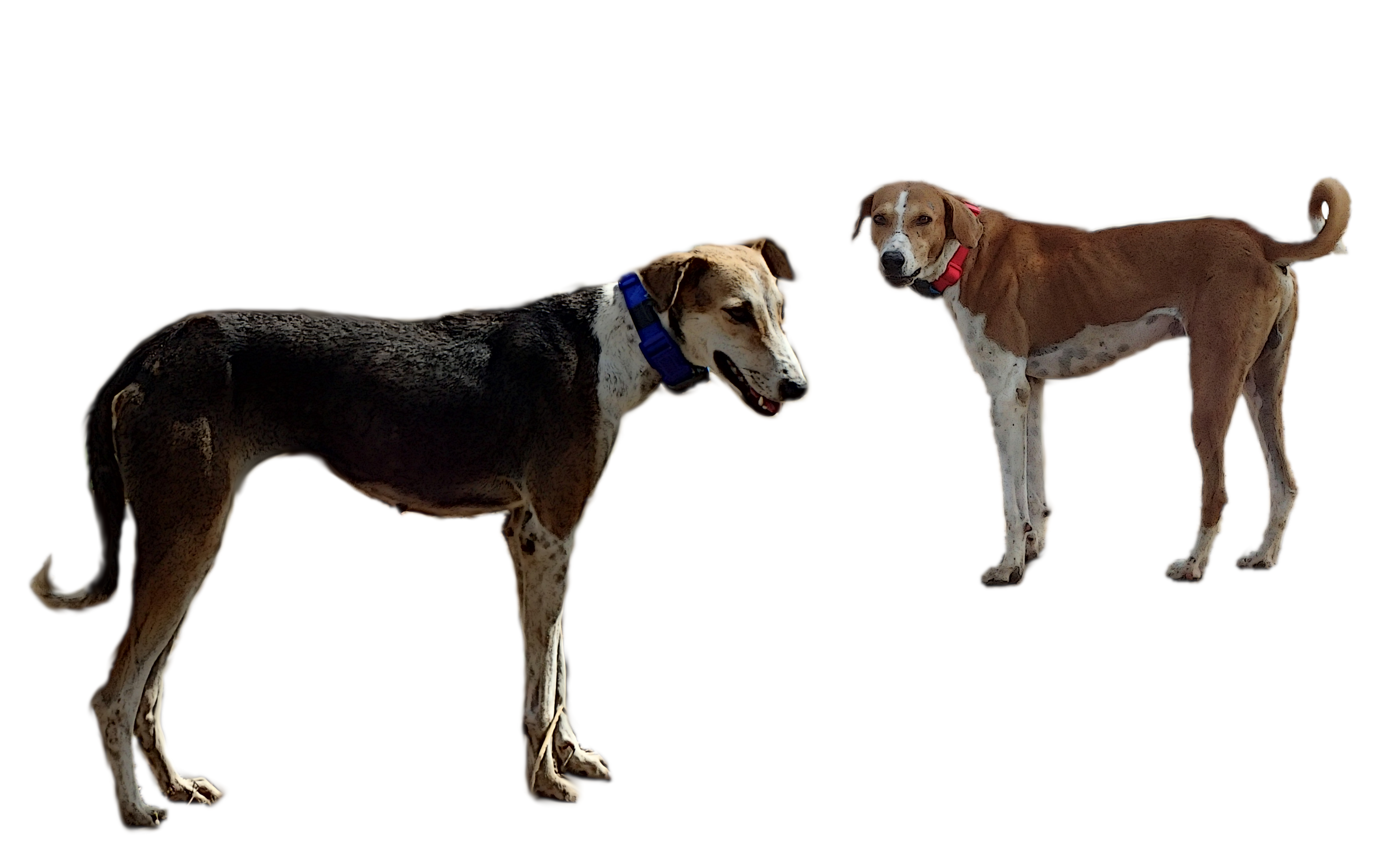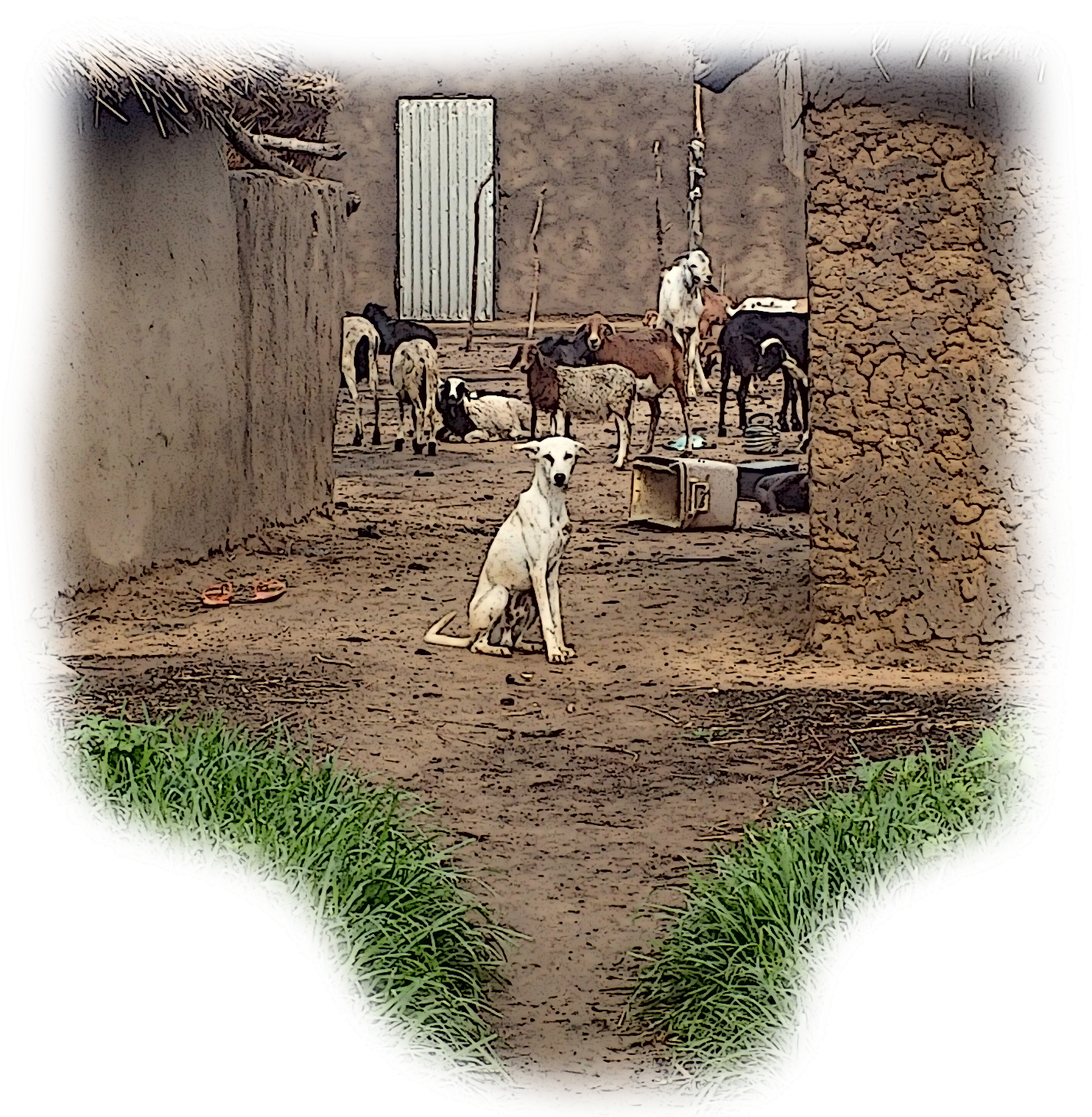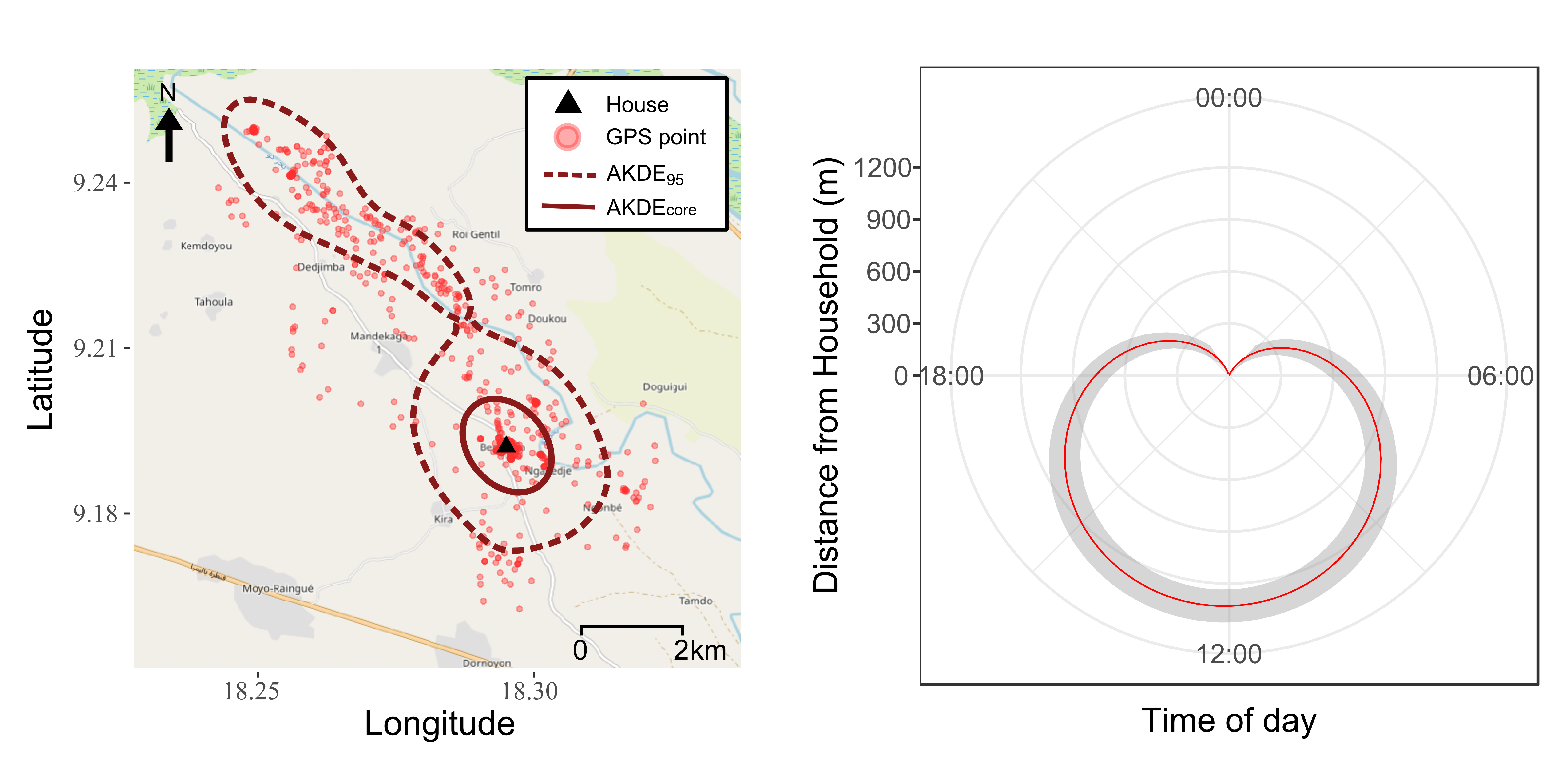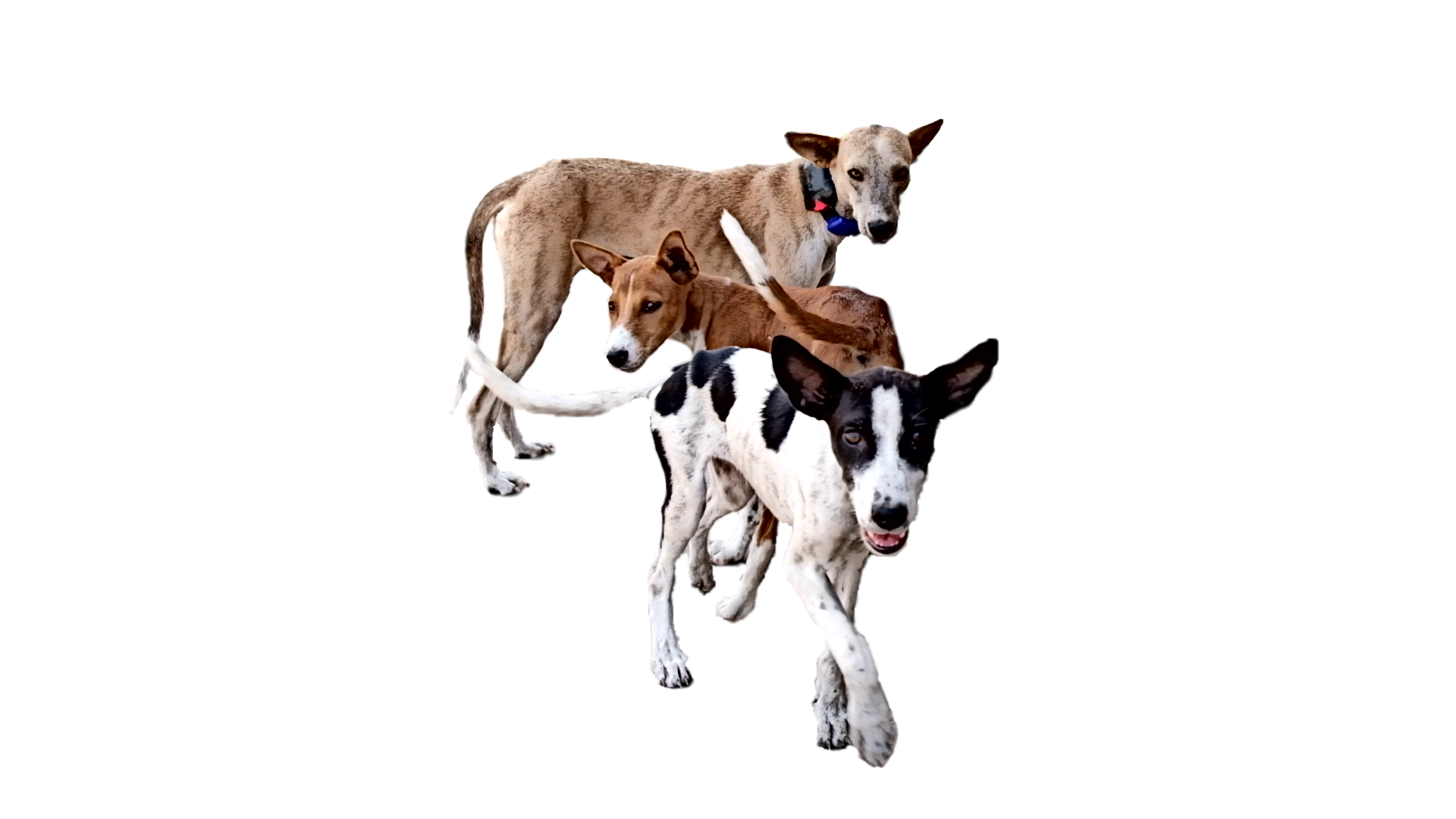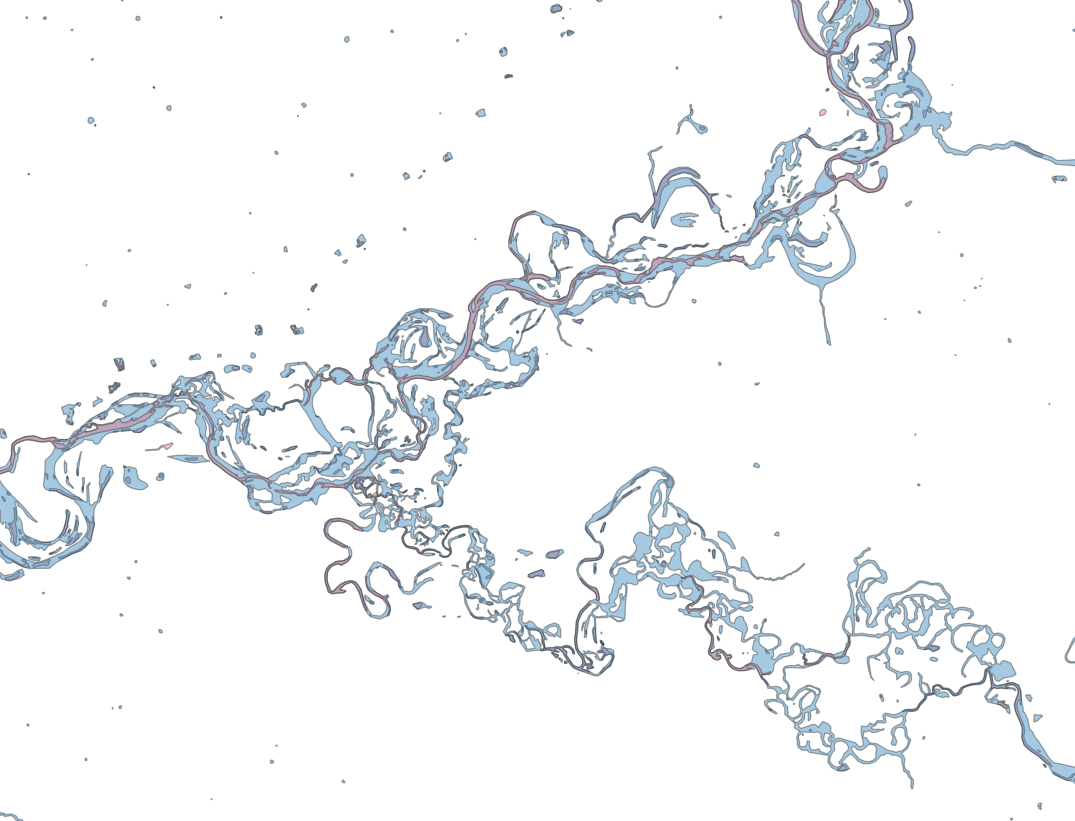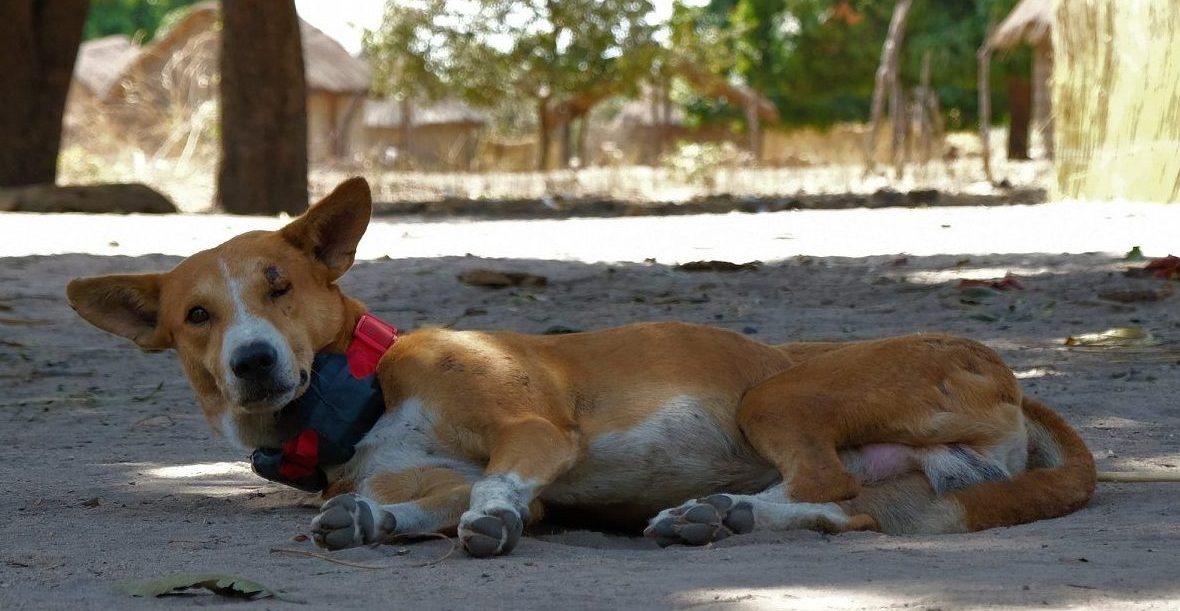CHAPTER 1:
INTRODUCTION
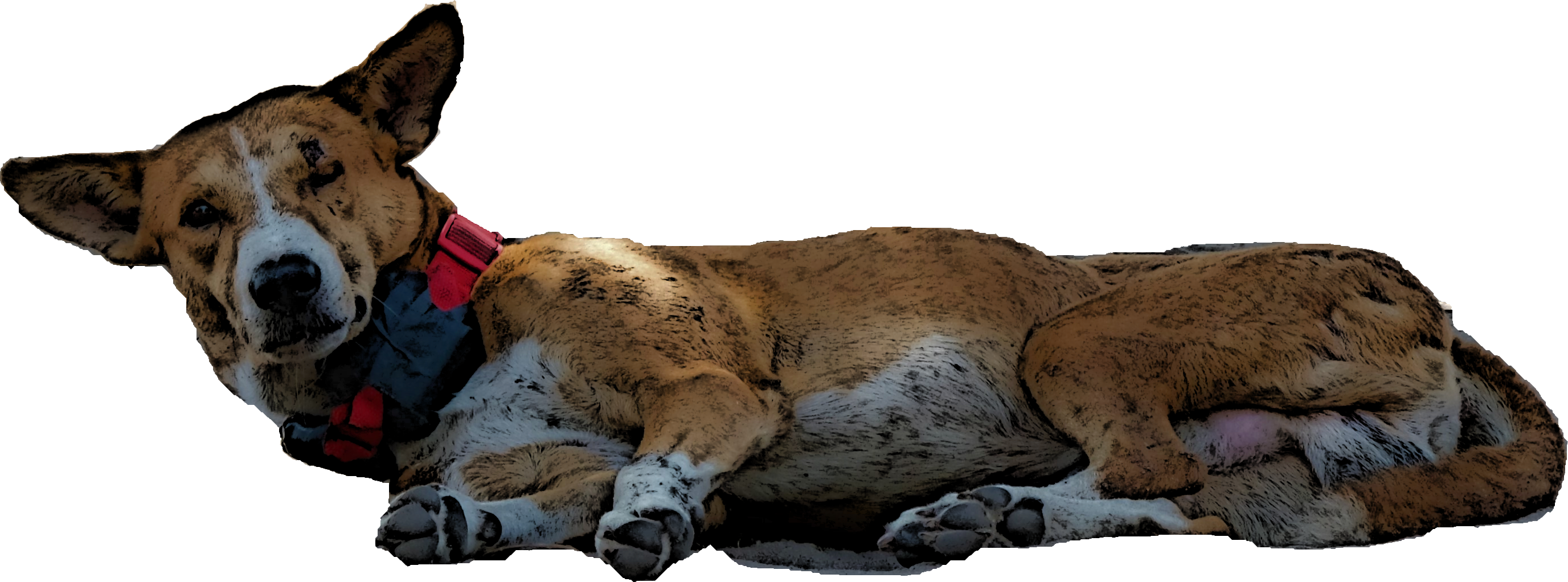
Controlling and preventing outbreaks of infectious diseases in human and non-human animals is a priority objective for public and animal health, and failure to do so can result in a significant loss of life and have adverse effects on the economy and on the conservation of biodiversity.
Free-ranging domestic dogs are reservoirs for several zoonotic diseases, and are currently the focus of two major public health programmes; the ‘Zero by 30’ strategic plan to eliminate dog-mediated rabies and the Guinea worm eradication programme. The management of these and other dog-mediated diseases would benefit from insights into the social and spatial ecology of free-ranging domestic dogs, and their relationships with the dynamics of disease transmission.
In this thesis, I explore spatial and temporal dynamics in the contact rates and space use of free-ranging domestic dogs in rural Chad; a region where the risks to humans of infection with rabies and Guinea worm are high.
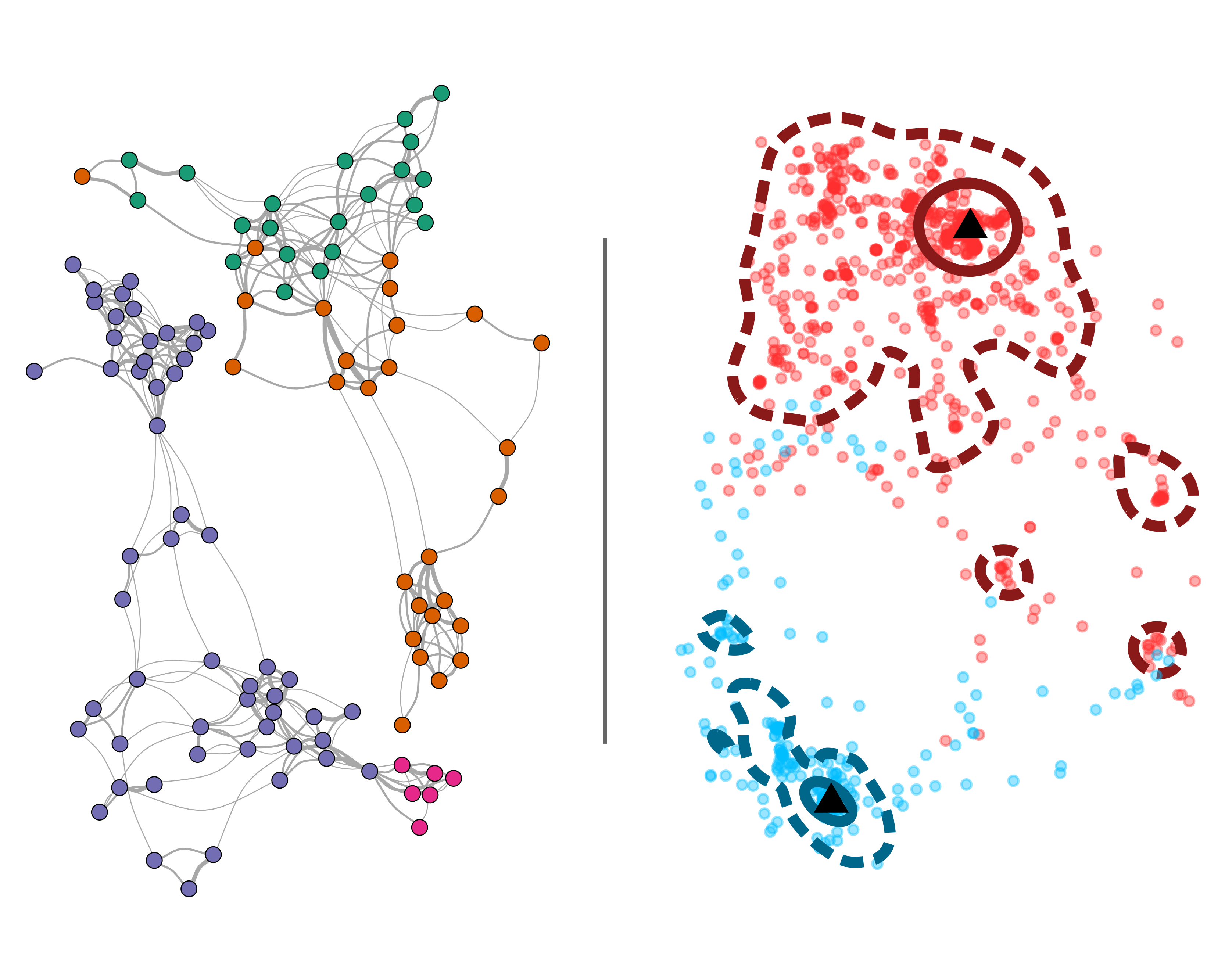
CHAPTER 2:
HIGH-RESOLUTION CONTACT NETWORKS OF FREE-RANGING DOMESTIC DOGS AND IMPLICATIONS FOR TRANSMISSION OF INFECTION
Contact patterns strongly influence the dynamics of disease transmission in both human and non-human animal populations. Domestic dogs are a reservoir for several zoonotic infections, yet few studies have empirically determined contact patterns within dog populations.
I describe static contact networks for free-ranging dogs, using novel proximity sensors, and then simulate the transmission of a communicable disease similar to rabies through the networks.
My results show that there is considerable variation in the number and duration of contacts between individuals, and that communities in the network were defined by household membership. Disease simulations showed that dogs with a higher ranked degree have a higher probability of starting an epidemic should they become infected, while those with a higher ranked eigenvector centrality tend to cause larger epidemics. Furthermore, in one settlement ranked eigenvector centrality was positively correlated with home range size.
I demonstrate that dogs are not equal in the epidemiological risks that they present and that there may be traits (e.g. drivers behind space use) that could identify individuals that present a higher risk.
Published in PLOS Neglected Tropical Diseases:
Wilson-Aggarwal, J.K., Ozella, L., Tizzoni, M., Cattuto, C., Swan, G.J., Moundai, T., Silk, M.J., Zingeser, J.A. and McDonald, R.A. (2019). High-resolution contact networks of free-ranging domestic dogs Canis familiaris and implications
CHAPTER 3:
THE SPATIAL AND TEMPORAL DYNAMICS OF SPACE USE BY FREE-RANGING DOMESTIC DOGS IN RURAL AFRICA
Variation in the spatial ecology of animals can have a major effect on the transmission of infections and an improved understanding of host behaviours can inform control of zoonotic diseases. Little is known about the dynamics of space use by free-ranging domestic dogs, which are globally widespread and act as a reservoir for several zoonotic diseases
I explore dog space use by using GPS loggers and continuous time movement models to calculate the dogs’ home ranges and to investigate temporal patterns in their activity levels and repeated space use.
GPS loggers were deployed on dogs from six villages in rural Chad in the dry and wet seasons for up to 70 days at a time. I characterised the movements of 174 individuals in the dry season and 151 in the wet season.
I found that seasonality was an important source of variation in space use, whereby home ranges were larger in the dry season, and this was exaggerated by owner activities. I find both daily and seasonal patterns in the dogs activity levels (speed) and in their location (repeated space use). Furthermore, I show that in rural Chadian villages, the proportion of dogs found around their household where access for disease control interventions is easiest, is more reliably above 70% throughout the day in the dry season.
These results highlight that, in rural Chad, disease interventions such as vaccination campaigns could access more dogs in the dry season, and the influence of human activity on dog movements presents opportunities for targeted interventions at the household level.
Published:
Wilson-Aggarwal, J.K., Goodwin, C., Swan, G.J., Moundai, T., Sidouin, M.K., Léchenne, M.L. and McDonald, R.A. Spatial and temporal dynamics of space use by free-ranging domestic dogs in rural Africa.
CHAPTER 4:
SPATIAL-TEMPORAL DYNAMICS OF CONTACT RATES AMONG FREE-RANGING DOMESTIC DOGS IN RURAL AFRICA
Forecasting and preventing epidemics can benefit from an understanding of the spatial-temporal dynamics of host contact rates, as these can determine variations in the risk of transmission. Using GPS and high-resolution proximity loggers I explored the spatial-temporal variation in contacts among free-ranging dogs from six rural villages in Chad. Proximity data were successfully collected for 199 individuals in the dry season and 166 individuals in the wet season.
I describe daily and seasonal patterns in the interactions between dogs, and found these varied by location; around the household, village and outside the village. I demonstrate that the spatial distribution of dog owning households was important in determining interactions between individuals and that there are seasonal patterns in the preferential mixing between the sexes. Although this study focused on within-village contacts, we observed rare between-village interactions; these were short in duration and mainly occurred around villages during the dry season, when dogs ranged more widely.
This study reveals clear spatial-temporal patterns in the contact behaviour of free-ranging dogs, suggesting that contact rates have the potential to drive temporal variation in the incidence of canine-mediated diseases in rural areas.
Unpublished:
Wilson-Aggarwal, J.K., Ozella, L., Tizzoni, M., Cattuto, C., Swan, G.J., Moundai, T., Sidouin, M.L.Silk, M.J., M.K., Léchenne, Goodwin, C. and McDonald, R.A. Spatial and temporal dynamics of contact rates among free-ranging domestic dogs in rural Africa.
CHAPTER 5:
EXPOSURE OF FREE-RANGING DOMESTIC DOGS TO POTENTIAL SOURCES OF INFECTION FOR GUINEA WORM
The global campaign to eradicate Guinea worm disease, caused by the parasite
Dracunculus medinensis, has been compromised by the emergence of infections in non-human hosts, particularly domestic dogs. Dog infections have been found in several countries but are most abundant in Chad, where the distribution of infections follows the course of the Chari River.
Infections in humans are acquired either via the classical pathway of drinking water contaminated with infected copepods, or through a possible novel route of consuming aquatic vertebrates that act as paratenic or transport hosts. Irrespective of the specific transmission pathway, water bodies along the Chari River are the sources of infection.
In this study, I characterised the activity of dogs around natural water sources. GPS technology was used to track the movements of 298 free ranging domestic dogs across three climatic seasons, and in six rural villages in Chad where dog infections are frequently recorded. High-resolution satellite imagery was used to identify natural water sources.
I found considerable temporal and spatial variation in the activity of dogs around water sources. The results of this study can be used to prioritise control efforts, such as the chemical treatment of water bodies, whereby water sources with the greatest amounts of dog activity can be targeted as a priority.
Unpublished:
Wilson-Aggarwal, J.K., Goodwin, C., Swan, G.J., Ozella, L., Moundai, T., Sidouin, M.K., Léchenne, M.L. and McDonald, R.A. Exposure of free-ranging domestic dogs Canis familiaris to potential sources of infection for Guinea worm Dracunculus medinensis.
ACKNOWLEDGEMENTS
My journey on this PhD, from start to finish, has been full of surprises. It has taken me to places that I would never have imagined going, and I have met some amazing people along the way. I am extremely grateful to the colleagues, friends and family that have supported me over the last few years.
I must start by thanking my supervisory team for the opportunity to do this PhD; Prof. Robbie McDonald (University of Exeter), Prof. Darren Croft (University of Exeter), Dr. Sarah Perkins (University of Cardiff) and Dr. Euan Ritchie (University of Deakin).
A very special thank you to Robbie McDonald, who it has been a pleasure to work alongside both in the office and in the ‘dead heart of Africa’, your supervision and support has helped shape me into being a more capable and confident researcher. My thanks to Jim Zingeser, my academic ‘uncle’, your ability to clear ‘road blocks’ to ensure a smooth passage for others is something to be reckoned with, working alongside you has been inspiring.
I feel very fortunate to have been part of a field team in Chad that comprised of some very resilient, and hardworking people: George Swan, you were the Bonnie to my Clyde, field seasons would not have been - dare I say it - as enjoyable without you, my sanity thanks you; My thanks to Monique Lechenne, who showed extreme patience in the field while dealing with my lack of linguistic abilities, and whose translation skills proved invaluable for our data collection and day-to-day field operations; Sidouin Metinou AKA the ‘Dog charmer’, who was instrumental in the logistics of field work, and who would always find words of optimism and encouragement at times of hardship; Cecily Goodwin, you were instrumental in the logistics and in reducing my stress levels, working alongside you in the field and office has been a joy and your advice on analyses have been invaluable, thank you.
It has been a pleasure to work alongside the Network gurus and lords of proximity sensors at the Institute for Scientific Interchange. My thanks go to Laura Ozella, Michele Tizzoni and Ciro Cattuto who have all been so welcoming on my visits to Turin, especially Laura and her partner Gigi who have given up much of their time to take me on tours of the city and to the mountains.
I am grateful to Darren Croft for insightful discussions about network analyses and for helping to find solutions on the issue of water proofing the proximity loggers. I am indebted to Matt Silk for support in network analyses and for being so supportive throughout my PhD. My thanks also goes to James Duffy, whose sage advice on GIS issues was invaluable.
To members of the research group, you are the best! I couldn’t have asked for a better academic support network. You have all been there to help in times of need; like the time all the batteries in the >200 loggers died the night before we left for Chad and needed changing, the McDonald Clan siren was engaged and you all came to the rescue. In no particular order, thanks to George Swan, Cecily Goodwin, Helen Fielding, Sarah Crowley, Cat McNicol, Olivia Bell, Nell Williams Foley, Martina Cecchetti, Katie Sainsbury, Matt Silk, Richard Woods and Tom Bodey.
To members of ‘the Cave’, you have been an endless supply of tea, coffee, treats, distractions, helpful discussions, laughs, sounding boards…the list goes on. Thanks to, the previously mentioned McDonald Clan, Govinder Pawar, Ben Makin, Robyn Knight and Tanya Venture. Of course I can’t get away without a special mention of my ‘work wife’, Bethany Roberts, thank you for being a considerate desk buddy and for never crossing the red line (except for when I left for field work).
I am extremely fortunate to have some amazing friends who have, on multiple occasions, come together to support me. It is hard to put into words how much love I have for you guys. Our various Cornish adventures together have been the perfect distraction from PhD related stress and the curve balls that general life has provided. Thank you to Owen Greenwood, Guy Freeman, Fraser Bell, Ben Toulson, Govinder Pawar, Billy Heaney, Ed Walker, Olivia Bell, Beth Roberts, Olivia Lee and Tobit Dehnen.
Over the last few years I have had two pillars of support that I cannot thank enough. Sara Mynott, thank you for your patience and understanding during times of ‘all work and no play’, my work life balance would have been more of a mess if it wasn’t for you. Thank you for standing by me through both the good bad and ugly. To my brother, Deraj, life gives us lemons and we make lemonade, lots of it. Thank you for always being there.
Finally, this research was supported by a studentship from the GW4+ Doctoral Training Partnership, funded by the Natural Environment Research Council, and by the University of Exeter College of Life and Environmental Sciences. Fieldwork was undertaken in parallel with a project on Guinea worm epidemiology in dogs and funded by grants from The Carter Center, and facilitated by the World Health Organisation and the Chad Ministry of Public Health. Satellite imagery was acquired through The Bill and Melinda Gates Foundation. To name but a few of the individuals that have provided support in one way or another; Hubert Zirimwabagabo, Mario Romero, Melinda Denson, Jordan Schermerhorn, Io Blair-Freese, Noelle Huskins and Tchonfienet Moundai.


